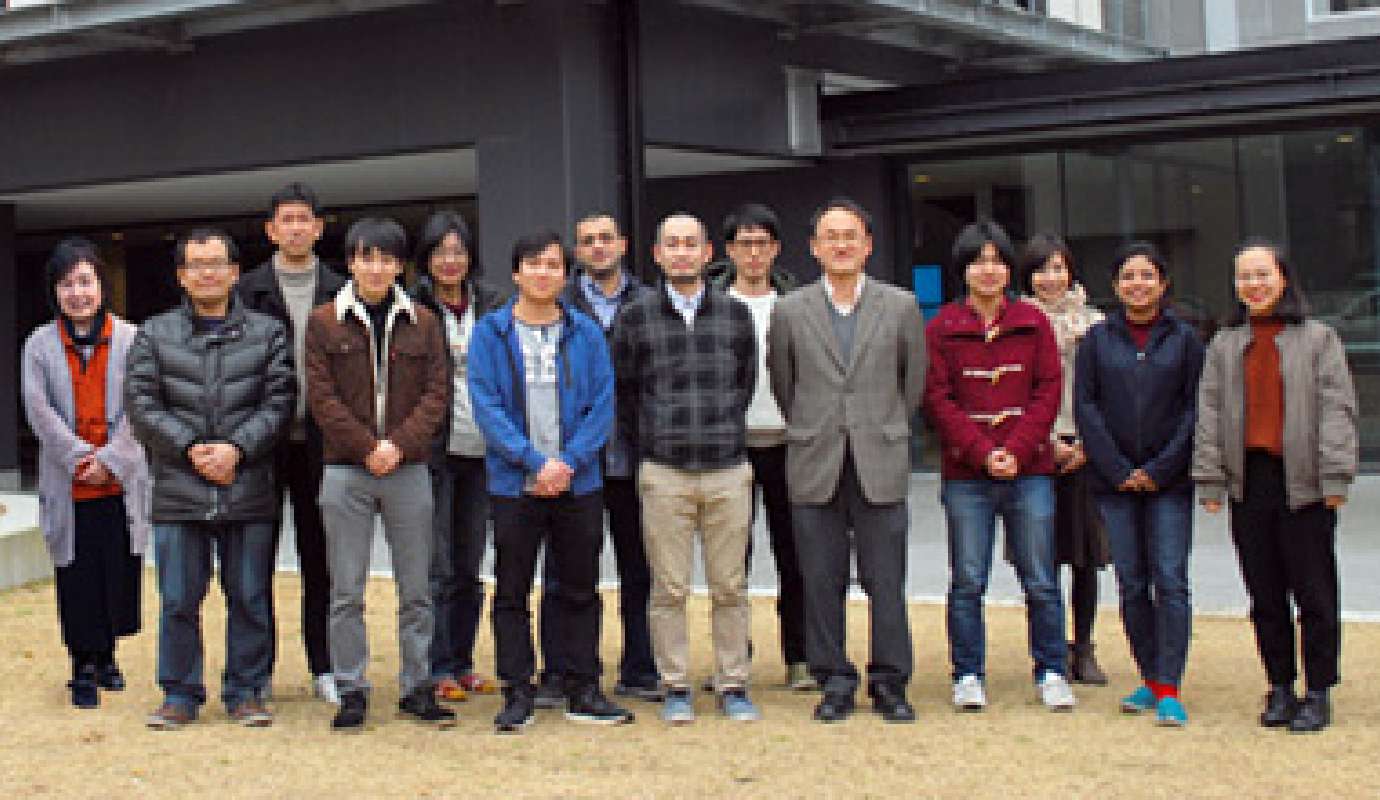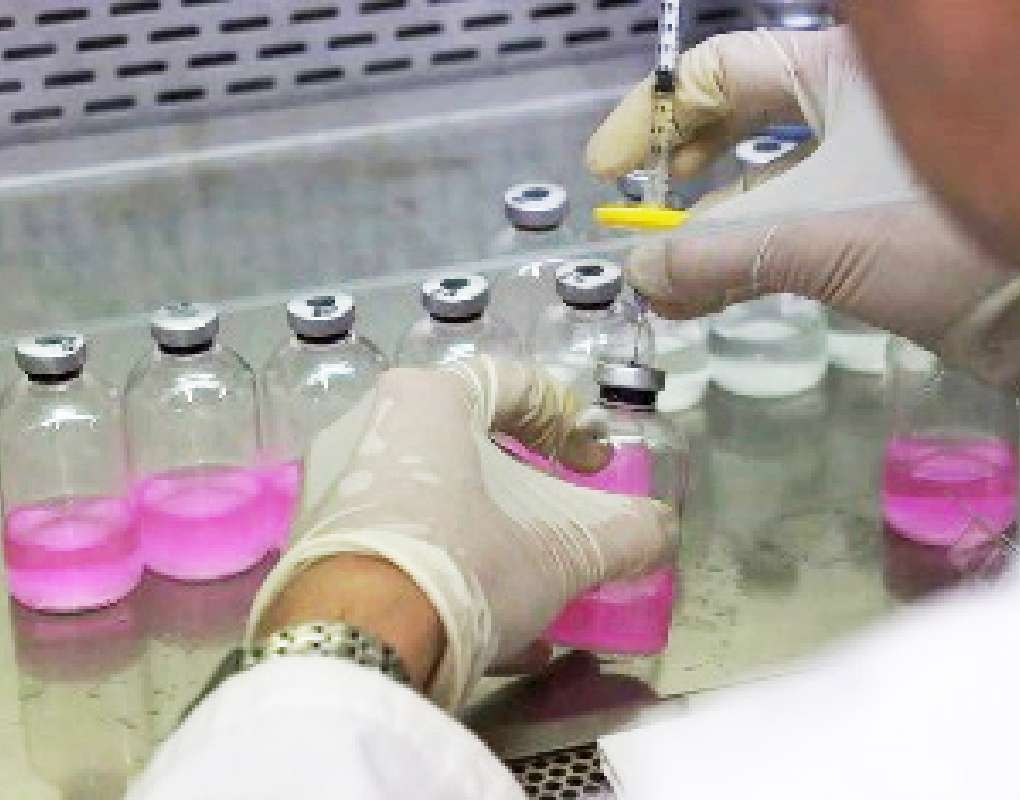Research
Research Group
Interview at Katayama Laboratory
Do microorganisms help clean the environment!?
—Discovery of the degradation mechanism of harmful substances by microorganisms—


How much do you know about the importance of microorganisms in the beauty and health of humans?
Microorganisms are small living organisms that cannot be seen with the naked eye, such as bacteria, viruses, and fungi. The number of microorganisms is astronomical and the number of classifications is huge. They exist in air, water, soil, on the surface of our skin, and inside our bodies. We are surrounded by many microorganisms in our daily lives.
In Katayama Laboratory, studies have been carried out on the mechanisms for the purification of polluted water and the degradation of harmful substances by biochemical reactions by selecting specific microorganisms from the huge number of microorganisms.
Microorganisms that purify water
Are there microorganisms that purify water, similarly to bacteria that digest food in the human body?
Katayama:There are various types of microorganisms. Some microorganisms have beneficial effects on us but others have harmful effects. Some microorganisms are aerobic, that is, they use oxygen to produce energy, while others (mostly bacteria) are anaerobic and do not require oxygen.
Among the huge number of microorganisms, we have identified the microorganisms that induce biochemical reactions leading to the purification of polluted water and are now studying how we can make these microorganisms proliferate. In addition, we are trying to generate power by collecting the small number of electrons generated through such biochemical reactions.
There is also a power-saving technology for breaking down harmful substances by providing electricity and then collecting electricity later.
Katayama:That’s right. I’m thinking of attaching electrodes used in redox reactions to the soil to feed microorganisms and encourage them to degrade harmful substances in soil on their own. For example, in the case of chlorinated organic compounds, which cause environmental pollution, electrodes can be inserted into the soil to supply electricity produced from solar energy and activate microorganisms. The electricity-activated microorganisms remove chlorine from the compounds, and break down the compounds to CO2. The energy generated through the break-down process is then collected. The amount of energy collected is very small but it is a type of power-saving technology.


Microorganisms and bio-electrochemical reactions
Is electricity the source of energy for microorganisms?
Katayama:Yes. For example, electrons are the nutrient for anaerobic bacteria (Dehalobacter spp., etc.) that can dechlorinate (detoxify) pentachlorophenol, which is a hazardous substance. We found, for the first time in the world, that solid humus (humin) in soils and sediments transfer electrons to anaerobic bacteria. In other words, microorganisms that degrade harmful substances live on electrons as the energy source obtained from the soil. This phenomenon is also common to the reactions of microorganisms with other harmful substances.



That is great! This research achievement is the result of your efforts.
Katayama:We spend most of the research time on the extraction of chemical substances. When we apply a purification process to soil and water, we need to evaluate whether they become indeed clean. In other words, we need to examine whether a hazardous chemical substance is eliminated, and if so, we need to determine what is produced by eliminating the chemical substance. This means that analyzing the components remaining in soil and water is a large part of our work.
To investigate the microorganisms that are involved in purification processes, we need to prepare an environment that is the same as their natural environment. For example, microorganisms that are active in an environment without oxygen can only be treated in an environment without oxygen. Therefore, keeping anaerobic microorganisms requires skillful handling, which is very important for our research. I describe researchers with such skills, who can keep anaerobic microorganisms, as having “God’s hands”.
Do you have a message for young researchers?
Katayama:I would like young researchers to have courage and to have an inquiring mind, rather than to just follow others. Accepted wisdom that has conventionally been considered common sense can sometimes be shattered. Therefore, I hope young researchers will believe in themselves and follow their own paths. In addition, I always say that triple personality is required to be a good researcher: 1. the idea-generating person, 2. the demonstrator, and 3. the critic. For those who study environmental problems, I would like to suggest that they collect social information by reading newspapers and watching the TV in addition to reading books on science and technology.
Microorganisms
There are several hundred million bacteria, over ten million yeast cells, and over ten thousand fungal cells in 1 g of soil.
Sediments
Sediments, such as clay, silt, sand, and gravel, and rocks that constitute the bottom of rivers, lakes, reservoirs, and the sea.
Solid humus (humin)
Complex of inorganic minerals and organic substances with amorphous polymer structure (insoluble in water at any pH).
Reactions of microorganisms with other harmful substances
Such bio-electrochemical reactions are observed in various microorganisms involved in the debromination of the flame retardant, tetrabromobisphenol A, the reduction of colloidal iron oxide, and the reduction of nitrate ions.
Text extracted from “IMaSS NEWS Vol. 04” Special Issue, IMaSS Publicity Committee (Okada and Konishi)


